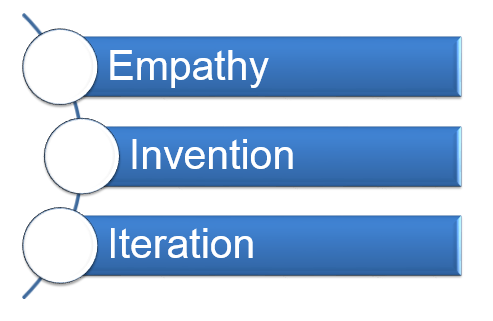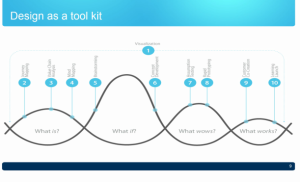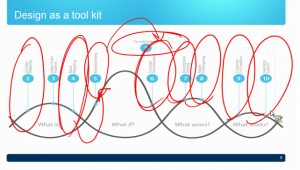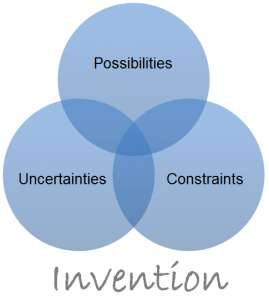 There has been considerable buzz about design thinking, a new approach to managerial problem-solving. Fittingly, the Darden School of Business provides great executive educational resources, not the least of which is a webinar on design thinking presented by Jeanne Liedtka, Darden’s official voice on the subject.
There has been considerable buzz about design thinking, a new approach to managerial problem-solving. Fittingly, the Darden School of Business provides great executive educational resources, not the least of which is a webinar on design thinking presented by Jeanne Liedtka, Darden’s official voice on the subject.
For your reading pleasure, I’d like to share my notes and reflections on this insightful presentation. The webinar is so informative that I’ll need to watch it several times to fully absorb the content and scope of design thinking.
What Is Design Thinking?
Design thinking is a trendy new approach to problem-solving for managers that is inspired by designers and how they approach their work. Liedtka emphasizes that it is by no means “the best” nor “the only” solution; it is merely one more approach to add to a manager’s problem-solving toolkit.
Aims of Design Thinking
According to Jeanne Liedtka, design thinking helps people learn how to:
- Use a disciplined approach to brainstorming that leads to valuable and actionable output.
- Engage the customer in the development of new business offerings.
- Use learning launches to make quick decisions about if and how to move ahead with growth projects.
- Reduce the unknowns to a concrete list of challenges you can solve through your organization’s existing resources.
- Have a process for handling dissent, resolving conflicts constructively and adapting on the fly.
How Design Thinking Works

There are many high-level concepts as well as a structured map of how to implement design thinking in problem-solving scenarios. For some people, design thinking is intuitive and comes very naturally. For others, it is extremely counter-intuitive and jarring. For the latter group, the detailed design thinking structure is most helpful to walk them through the process of innovating and solving business problems.
As Liedtka walked us through each step, this beautifully simplistic map of steps quickly became a page full of red scribbles. Evidently, it takes considerable practice to fully understand and implement each one of these steps in the design thinking process.

3 Core Assumptions
According to Liedtka, design thinking is based on three core assumptions:
1) Empathy has a core role. The design process essentially human-centered. While understanding data is important, having empathy for your customers is more important for understanding them and being able to address their needs.
2) Invention – To discover new possibilities, design thinking puts mindfulness into the space where possibilities, constraints, and uncertainties intersect.

3) Iterative – Each solution is a stepping stone to the next & better one. No attempt is the “best” one; we learn as we go
The philosophy behind design thinking embraces the idea that it’s impossible to predict the future based on data from the past. As such, a new approach is needed to anticipate the challenges business leaders face in today’s rapidly-evolving economy.
While it will be informative to see how design thinking stands the test of time, suffice it to say that presently many business leaders find the process to be a productive solution to many daily business conundrums.
Don’t Stop There
If you want to learn more about design thinking, Darden has a FREE goldmine of business resources. To deepen your understanding of design thinking, check out Darden’s resources at your will and pleasure.